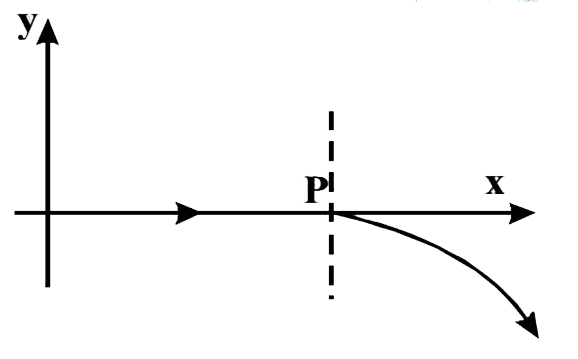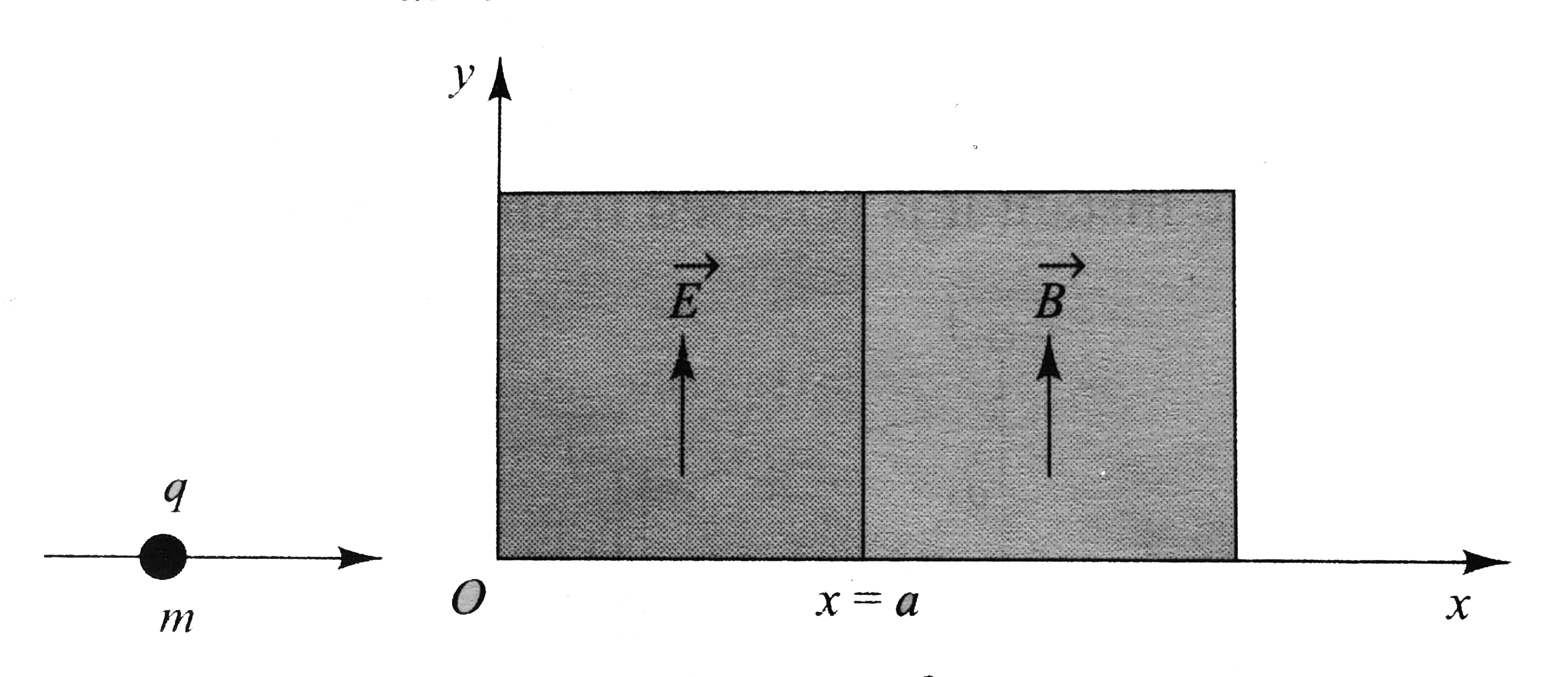For a positively charged particle moving in a plane initially along the , there is a sudden change in its path due to the presence of electric and//or magnetic fields beyond . The curved path is shown in the plane and is found to be non - circular. Which one of the following combinations is possible ?

.
The correct Answer is:a, b
There is a sudden change in the path. In all options either or it is along X-axis, hence the deflection is due to magnetic force only. Velocity along X-axis is not affected by the component of magnetic field along X-axis. Moreover, the immediate path followed by the particle is on - plane hence the y-component of magnetic field is not desirable. Thus, options (a) and (b) are possible.
Topper's Solved these Questions
- BOOK - MODERN PUBLICATIONCHAPTER - MOVING CHARGES AND MAGNETISMEXERCISE - COMPETITION FILE (D. MULTIPLE CHOICE QUESTIONS)10videos
MOVING CHARGES AND MAGNETISM
- BOOK - MODERN PUBLICATIONCHAPTER - MOVING CHARGES AND MAGNETISMEXERCISE - COMPETITION FILE (ASSERTION TYPE QUESTIONS)10videos
MOVING CHARGES AND MAGNETISM
- BOOK - MODERN PUBLICATIONCHAPTER - MOVING CHARGES AND MAGNETISMEXERCISE - COMPETITION FILE (B. MULTIPLE CHOICE QUESTIONS)79videos
MOVING CHARGES AND MAGNETISM
- BOOK - MODERN PUBLICATIONCHAPTER - MAGNETISM AND MATTEREXERCISE - CHAPTER PRACTICE TEST FOR BOARD EXAMINATION16videos
MAGNETISM AND MATTER
- BOOK - MODERN PUBLICATIONCHAPTER - NUCLEIEXERCISE - CHAPTER PRACTICE TEST FOR BOARD EXAMINATION15videos
NUCLEI
Similar Questions
An electron in moving along positive x-axis in the presence of uniform magnetic field along positive y-axis. What is the direction of the force acting on it ?
View SolutionAn electrons is moving along +ve x-axis in the presence of uniform magnetic field along +ve y-axis. What is the direction of the force acting on it?
View Solution
Knowledge Check
- Question 1 - Select One
A positively charge particle moving along x-axis with a certain velocity enters a uniform electric field directed along positively y-axis. Its
AVertical velocity changes but horizontal velocity remains constantBHorizontal velocity changes but vertical velocity remiand constantCBoth vertical and horizontal velocities changeDNeither vertical nor horizontal velocity changes. - Question 2 - Select One
x and y co-ordinates of a particle moving in x−y plane at some instant of time are x=2t and y=4t.Here x and y are in metre and t in second. Then
The path of the particle is a…….Astraight lineBparabolaCcircleDellipse - Question 3 - Select One
A charged particle moves along a circle under the action of possible constant electric and magnetic fields. Which of the following are possible?
AE=0,B=0BE=0,B≠0CE≠0,B=0DE≠0,B≠0
A particle moves in the the x−y Plane according to the scheme x−8sinπt, where t is time. Find equation to the path of the particle. Show the path on a graph.
View SolutionA positively charged particle, having charge q, is accelerated by a potential difference V. This particle moving along the x-axis enters a region where an electric field E exists. The direction of the electric field is along positive y-axis. The electric field exists in the region bounded by the lines x=0andx=a. Beyond the line x=a (i.e., in the region x>a), there exists a magnetic field of strength B, directed along the positive y-axis. Find

a. at which point does the particle meet the line x=a.
b. the pitch of the helix formed after the particle enters the region x≥a. (Mass of the particle is m.)View SolutionA charged particle moves along a circle under the action of passible constant electric and magnetic fields. Which of the following are possible?
View SolutionA particle of mass m and positive charge q is projected with a speed of v0 in y–direction in the presence of electric and magnetic field are in x–direction. Find the instant of time at which the speed of particle becomes double the initial speed.
View SolutionA point mass is moving in the x-y plane. Its acceleration is a constant vector perpendicular to the x-axis. Which of the following do/does not charge with time ?
View Solution

